Quick links:
Introduction to bat boxes
Bat box design
Bat box materials
Mounting and installing bat boxes
Further information
Accessories and suggested reading
Introduction to bat boxes
Globally there are over 1,400 different species of bat and the UK inhabits 18 of these bat species. Although UK bat species do not create their own roost sites, they will roost in trees and occupy spaces that are created by other animals or decaying trees. But due to the removal of trees and suitable habitat, bats will now often favour human-made roosting sites. The addition of available roost sites is an important way to help prevent the ever-declining UK bat populations.
When choosing which bat box fits your needs, there are a few things to consider – the design of the bat box, the material, and the mounting and installation method. These features can be determined by identifying the target bat species alongside the location and habitat you wish to situate the bat box.
Bat box design
There are several types of bat box design and these can be split into crevice, cavity and hybrid boxes, as well as hibernation, maternity and heated boxes.
Crevice boxes provide a narrower roost space for species that naturally prefer smaller roosts, such as Brandts, Natterers and Pipistrelles, whereas cavity boxes offer a more spacious roost space favoured in general by the larger bat species such as the Greater and Lesser Horseshoe, Barbastelle and Brown Long-eared. Some boxes are designed to be hybrid boxes, meaning they can accommodate both cavity and crevice bat species.
Crevice: Low Profile WoodStone Bat Box
Cavity: Improved Cavity Bat Box
Hybrid: General Purpose Bat Box
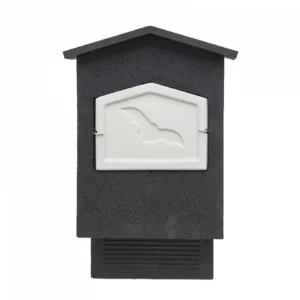
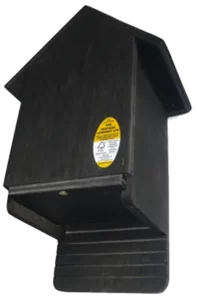
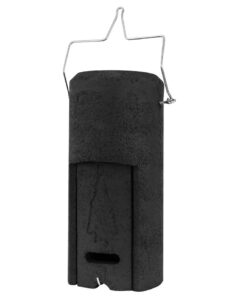
Hibernation and maternity boxes are similar in their design to provide a warm and safe roosting space. Both boxes tend to be well insulated and larger in size with multiple internal chambers, especially important for maternity boxes that accommodate breeding colonies. There are also heated bat boxes; in these, the temperature is controlled by an external thermostat and can aid with mitigation schemes for the loss of bat maternity sites.
Hibernation: Large Multi Chamber WoodStone Bat Box
Maternity: Causa Maternity Bat Box
Heated: Heated Bat Roost Box
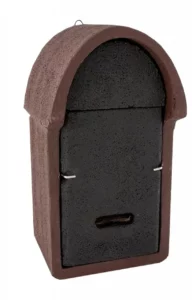
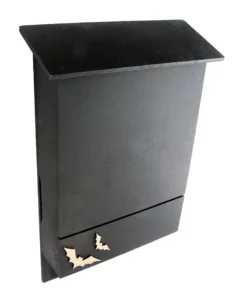
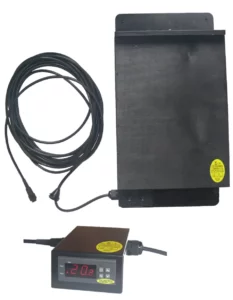
Bat box materials
Bat boxes can be made from a number of different materials; these vary in longevity, durability and often price. The most common materials are wood (often timber); a wood and concrete blend, sometimes known as woodstone or woodcrete; eco-plastic; and concrete. Below is a brief description of each alongside one of our best sellers.
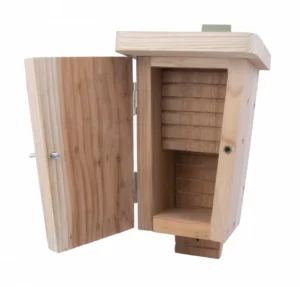 Wooden bat boxes
Wooden bat boxes
- Lightweight
- Suitable for externally mounting on both trees and buildings
- Less robust and shorter longevity than woodstone/woodcrete boxes
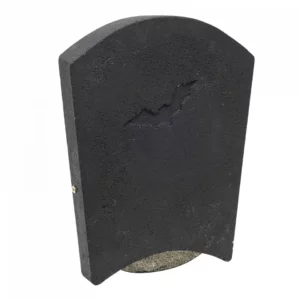 Woodstone and woodcrete bat boxes
Woodstone and woodcrete bat boxes
- Very durable and long-lasting
- Well insulated
- Can be built in or externally mounted to buildings
- Heavier than wooden and eco-plastic boxes
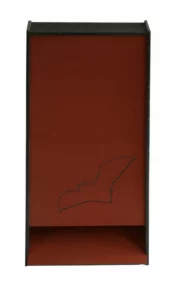 Eco-plastic bat boxes
Eco-plastic bat boxes
- Sustainably sourced recycled plastic
- Lighter than woodstone/woodcrete and more durable than wooden boxes
- Although made from recycled plastic, it is still plastic
Concrete bat boxes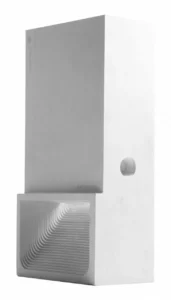
- Very durable
- Very heavy and can only be built directly into buildings
Mounting and installing bat boxes
Bat boxes fall into externally mounted or integrated boxes. Mounted boxes can be fixed to trees, fences or buildings, and integrated boxes are built directly into the brickwork of a building.
Externally mounted boxes can vary in size and material, and often they are wooden or woodstone/woodcrete. When choosing an externally mounted bat box, it is important to consider the weight of the box and the surface you are mounting the box to. Some are lighter and ideal for mounting on trees, while some are more durable and can be fixed to buildings.
All bat boxes should be positioned in an open and sunny location (ideally boxes should have 6-8 hours of direct sunlight), around 3-6 metres high (the higher the better). It is important to avoid placing these close to any artificial lights such as streetlamps or security lights. External mounted boxes can be attached via a hanger or fixing bracket and it is best to fix using aluminium nails.
2F Schwegler Bat Box (General Purpose)
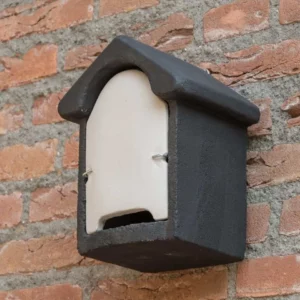
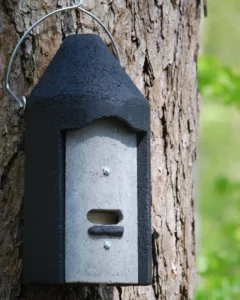
Integrated bat boxes are self-contained concrete roosts. They are popular with new housing developments as they are unobtrusive and often aesthetically pleasing. The boxes can be built flush to the wall or beneath a rendered surface, and each box has an entry point that must be left exposed for the bats to access the box. Some boxes are plain for rendering or can be custom faced with a chosen brick type which adds to their discreteness.
Vivara Pro Build-in WoodStone Bat Box
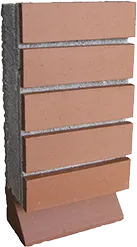
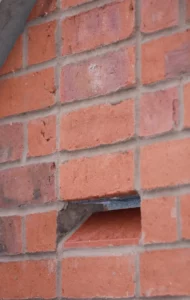
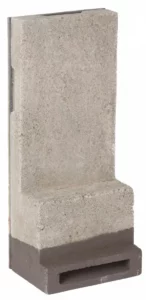
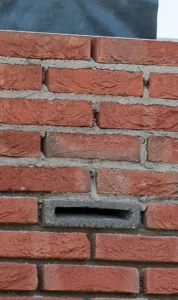
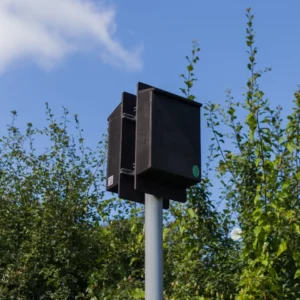 There are also pole-mounted bat boxes (sometimes known as rocket boxes). These bat boxes are helpful alternatives in areas where there is nowhere to mount the bat box. An additional benefit is that they ensure that the bat box gains maximum sunlight in shaded areas.
There are also pole-mounted bat boxes (sometimes known as rocket boxes). These bat boxes are helpful alternatives in areas where there is nowhere to mount the bat box. An additional benefit is that they ensure that the bat box gains maximum sunlight in shaded areas.
Pole Mounted Large Colony Bat Box
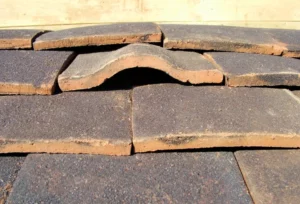 Lastly, there are bat roost access titles and bricks. These are designed to provide bats with access points within roof or ridge tiles. Some bats will roost in the confined spaces beneath the tiles and others will use the open roof space to roost.
Lastly, there are bat roost access titles and bricks. These are designed to provide bats with access points within roof or ridge tiles. Some bats will roost in the confined spaces beneath the tiles and others will use the open roof space to roost.
Further information
We supply a wide range of bat boxes, and we hope this Buyer’s Guide is informative and provides a useful breakdown of the different types available to help you decide which bat boxes best suits your needs.
For further information, please get in contact with us directly and take a look at our blogs including The NHBS Guide to UK Bat Identification and the NHBS Guide: Where to hang and how to maintain your bat box.
Accessories and suggested reading
Xtend & Climb Pro Telescopic Ladder
Bat Calls of Britain and Europe: A Guide to Species Identification
-
Our full range of bat boxes can be found here.
If you have any questions about our range or would like some advice on the right product for you then please contact us via email at customer.services@nhbs.com or phone on 01803 865913.





